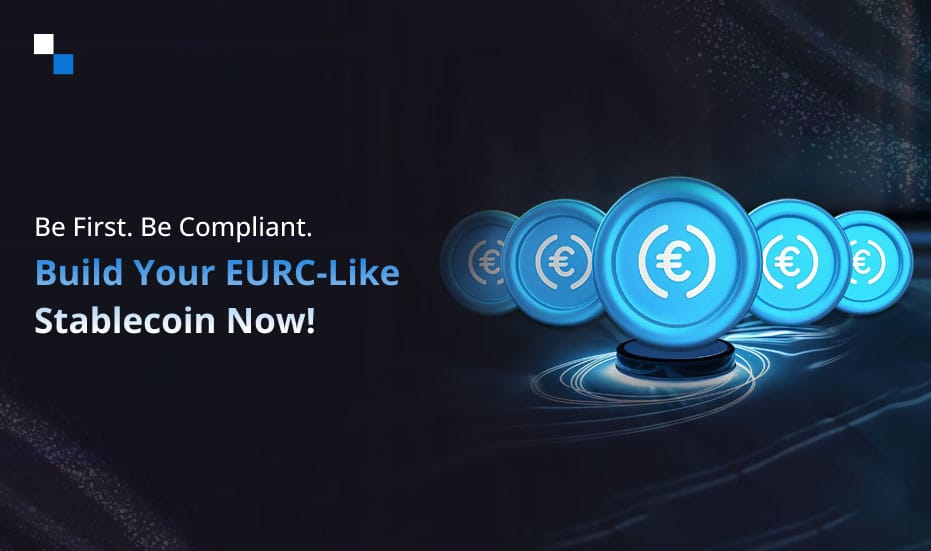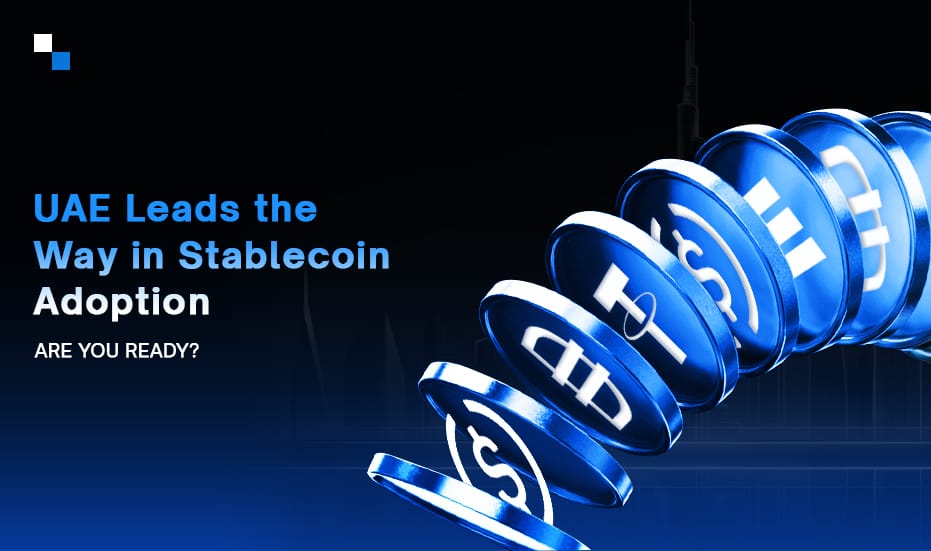
The Rise of Meme Crypto Coin Development: Exploring the Implications
June 28, 2023
Custom USTD TRC20 Wallet Clone Script: Tailored Solutions for Your Crypto Needs
June 29, 2023Stablecoins are a type of cryptocurrency that is designed to maintain a stable value relative to a fiat currency, such as the US dollar. This makes them attractive to investors who are looking for a more predictable and less volatile investment than traditional cryptocurrencies. However, ensuring long-term stability in the face of market volatility and risks poses significant challenges. This is where the integration of artificial intelligence (AI) into stablecoin development becomes increasingly relevant. By leveraging AI-powered risk management techniques, a stablecoin development company can handle the projects with greater care to enhance the stability mechanisms, mitigate potential risks, and fortify the security of the entire ecosystem.
Understanding Stablecoin Risks
As we know, stablecoins are not without their risks. One of the biggest risks is that they could be subject to fraud or manipulation. If a stablecoin issuer were to lose access to its reserves, or if there were a run on the stablecoin, it could lose its peg to the fiat currency and become worthless.
AI-enhanced risk management can help to mitigate these risks. AI can be used to monitor stablecoin markets for signs of fraud or manipulation. It can also be used to analyze stablecoin reserves to ensure that they are sufficient to back the value of the stablecoin.
In addition, AI can be used to develop new risk management tools and techniques. For example, AI could be used to develop a model that predicts the likelihood of a stablecoin losing its peg. This model could then be used to set alarms or take other preventive measures if the risk of a peg loss increases.
The Power of AI in Risk Management
Artificial intelligence offers a range of tools and techniques that can significantly enhance risk management in stablecoin development. Machine learning algorithms, natural language processing, data analytics, and pattern recognition enable AI systems to process vast amounts of data, detect trends, and make intelligent predictions. By analyzing historical data, market indicators, and real-time information, AI systems can identify potential risks, evaluate market conditions, and recommend proactive risk management strategies.
There are a number of different AI techniques that a stablecoin development company can use for risk management. Some of the most common techniques include:
- Machine learning: Machine learning can be used to develop models that can learn to identify patterns in data. These models can then be used to predict the likelihood of certain events happening, such as a stablecoin losing its peg.
- Natural language processing: Natural language processing can be used to analyze text data, such as social media posts or news articles. This data can be used to identify signs of fraud or manipulation or to track the sentiment around a stablecoin.
- Blockchain analytics: Blockchain analytics can be used to track the flow of funds in and out of stablecoin systems. This data can be used to identify suspicious activity, such as large transfers of funds or multiple accounts being controlled by the same person.
AI-enhanced risk management is a promising new approach to mitigating the risks associated with stablecoins. By using AI, stablecoin issuers can gain a better understanding of the risks they face and take steps to mitigate them. This will help to ensure that stablecoins remain a safe and reliable investment option for investors.
Develop a New Stablecoin With Unique Attributes
Schedule Free DemoProactive Risk Identification and Mitigation
AI-powered risk management solutions empower stablecoin developers to identify potential risks before they escalate into significant issues. By continuously monitoring market conditions, AI algorithms can detect patterns and signals that may indicate impending risks. This early warning system allows developers to take timely actions, such as adjusting collateral reserves, rebalancing portfolios, or implementing targeted interventions, to mitigate risks and maintain stability.
Here are some specific examples of how AI is being used to enhance risk management in stablecoin development:
- Circle: Circle is a company that issues the USD Coin (USDC), a popular stablecoin. Circle uses AI to monitor USDC markets for signs of fraud or manipulation. For example, Circle uses AI to analyze social media posts and news articles for mentions of USDC. If Circle sees a suspicious increase in mentions of USDC, it can take steps to investigate the matter.
- Paxos: Paxos is another company that issues stablecoins. Paxos uses AI to analyze the flow of funds in and out of its stablecoin systems. For example, Paxos uses AI to identify large transfers of funds or multiple accounts being controlled by the same person. If Paxos sees suspicious activity, it can take steps to investigate the matter.
- MakerDAO: MakerDAO is a decentralized autonomous organization (DAO) that issues the DAI stablecoin. MakerDAO uses AI to analyze the collateral that is backing DAI. For example, MakerDAO uses AI to identify collateral that is becoming riskier. If MakerDAO sees collateral becoming riskier, it can take steps to reduce the amount of DAI that is backed by that collateral.
Enhancing Liquidity Management
Maintaining sufficient liquidity is essential for stablecoin operations. AI systems can analyze trading volumes, liquidity patterns, and market dynamics to optimize liquidity management strategies. By forecasting liquidity needs and identifying potential liquidity shortages, AI-enhanced risk management tools can enable stablecoin projects to take preemptive measures, such as liquidity injections or establishing partnerships with liquidity providers, to ensure smooth operations and avoid disruptions.
Here are some key ways in which a stablecoin development company can leverage the power of AI in stablecoin liquidity management:
- Data Analysis and Pattern Recognition: AI-powered algorithms can analyze vast amounts of historical and real-time data, including trading volumes, liquidity patterns, market trends, and user behavior. By identifying patterns and correlations, AI systems can gain insights into liquidity needs and predict future liquidity requirements.
- Risk Assessment and Liquidity Stress Testing: AI-driven risk models can assess the potential impact of various scenarios, including market downturns or sudden increases in demand. By simulating different market conditions, AI systems can stress-test the liquidity position of stablecoin projects, identifying vulnerabilities and enabling risk mitigation strategies.
- Automated Market Making: AI can enhance market-making strategies for stablecoins by automating the provision of liquidity. AI-powered algorithms can continuously monitor order books, execute trades, and adjust pricing based on market conditions, ensuring optimal liquidity provision and reducing the risk of price slippage.
- Real-Time Monitoring and Adaptive Strategies: AI systems can provide real-time monitoring of liquidity conditions, detecting changes in market dynamics and liquidity levels. By continuously analyzing data, AI algorithms can dynamically adjust liquidity management strategies, including liquidity injections or withdrawals, to match evolving market conditions.
- Integration with Decentralized Exchanges (DEXs): AI can facilitate stablecoin liquidity management in decentralized exchanges by optimizing liquidity across different trading pairs and platforms. AI algorithms can analyze order book data, trading volumes, and liquidity pools to determine the most efficient allocation of liquidity, improving overall market depth and reducing slippage.
- Risk Management and Compliance: AI-powered risk management tools can assist stablecoin projects in complying with regulatory requirements related to liquidity management. AI systems can monitor regulatory frameworks, analyze compliance data, and flag potential risks, helping stablecoin projects maintain compliance while managing liquidity effectively.
Conclusion
The integration of AI in risk management for stablecoin development holds immense promise for ensuring stability, security, and resilience within the ecosystem. By harnessing the power of AI-driven analytics, pattern recognition, and adaptive strategies, stablecoin projects can proactively identify and mitigate risks, optimize collateral and liquidity management, and navigate regulatory landscapes effectively.
The real-time monitoring capabilities and forecasting prowess of AI empower stablecoin projects to stay ahead of potential challenges, adapt to evolving market conditions, and build robust risk management frameworks. As stablecoins continue to evolve and play a pivotal role in the digital economy, AI-enhanced risk management emerges as a critical tool, providing a foundation of trust and confidence for users and facilitating the sustainable growth of stablecoin ecosystems.
Antier, a stablecoin development company with rich experience in integrating AI with different technologies can help smoothen your stablecoin development journey by enhancing risk management. Try today!



